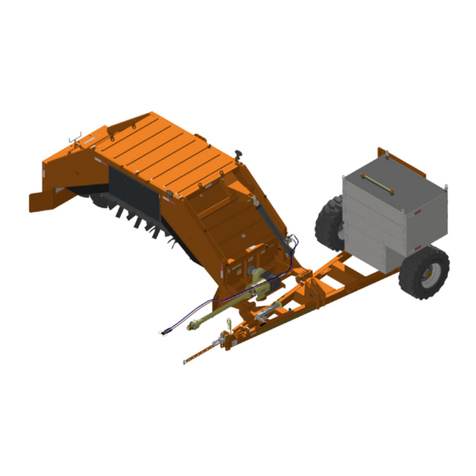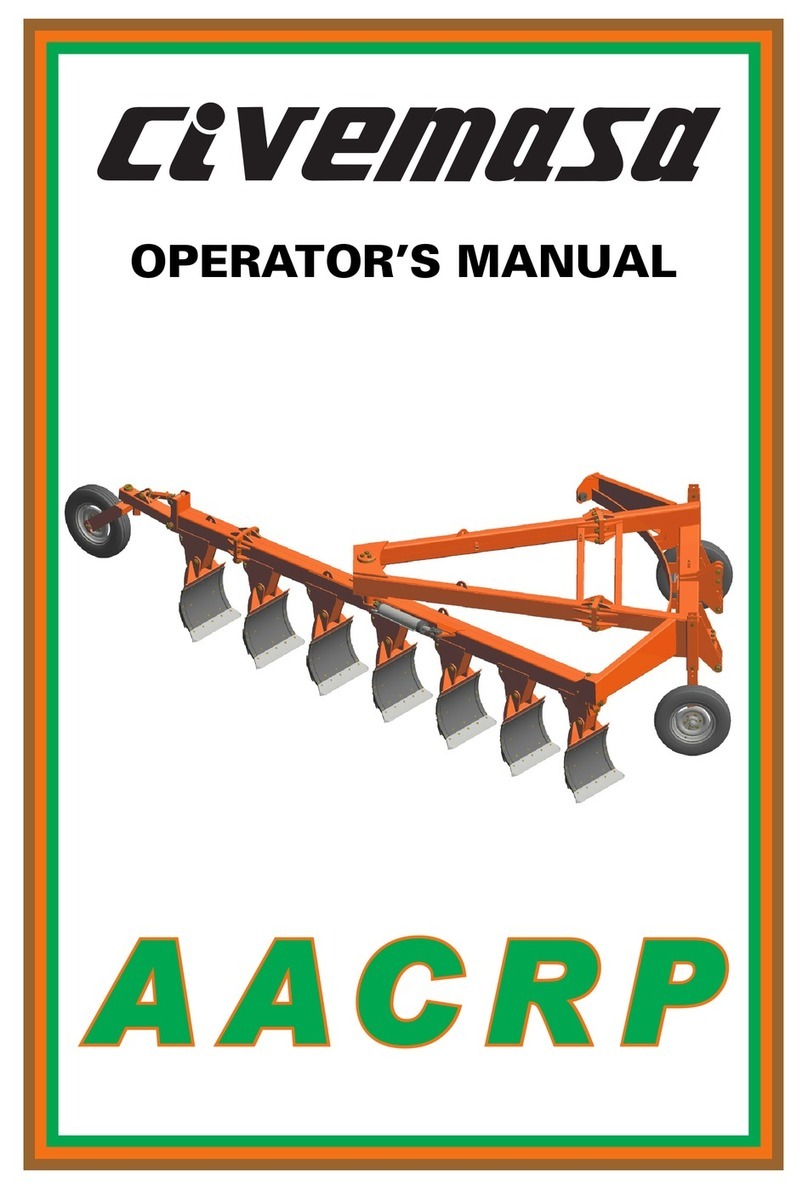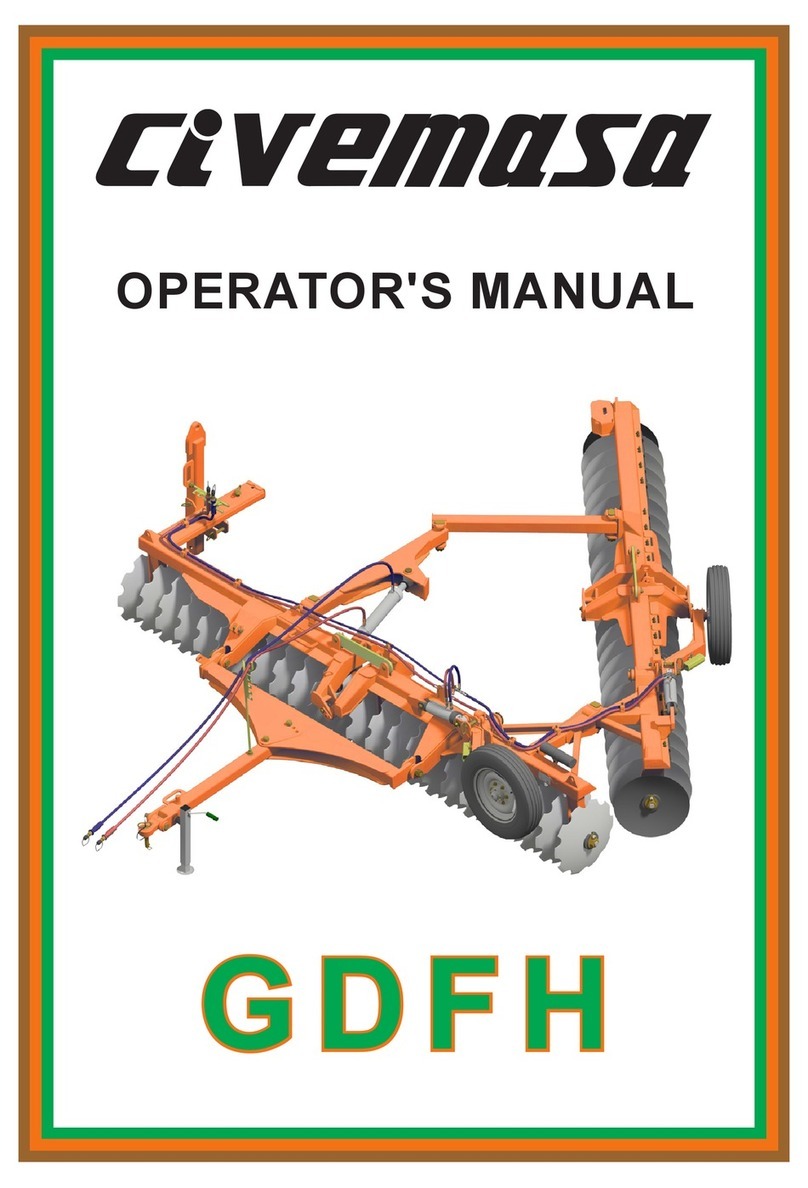
2GIC-TL - Rev. 00 - Jan/23
1. To the owner 3
2. To the operator 4 to 14
3. Data sheet 15 to 17
4. Components 18
5. Assembly 19 to 36
Using the set of wrenches 19
Assembly of bearings and spacer spools 20
Disc gangs assembly sequence 21 & 22
Assembly of the disc gangs on the frame 23
Scrapers assembly 24
Frames junction assembly / Junction extension assembly 25
Wheel support assembly 26
Wheel locks and cylinder assembly 27
Stop assembly 27
Drawbar assembly 28
Drawbar articulation set assembly 29
Opening system assembly 30
Transport bar assembly 31
Hydraulic circuit ducts and valves assembly 32
Hydraulic circuit assembly 33 to 36
6. Set-up instructions 37 to 44
Preparing the tractor / Preparing the equipment 37 & 38
Hitching to the tractor - hydraulic cylinder / Hitching to the tractor 38 & 39
Jack position 40
Procedures to transport the equipment 41 to 43
Hitching to the tractor to operate the disk harrow 44
7. Adjustments and operations 45 to 52
Cutting depth 45 & 46
Tractor position related to the previous pass - lateral displacement 47
Fixation holes on the hitch bar 48
Drawbar articulation extensor adjustment / Junction extension adjustment 48
Ways to start the harrowing 49
Direction of the maneuvers 50
Operations - important points 51 & 52
8. Maintenance 53 to 63
Lubrication / Lubrication points 53 to 55
Wheel support hubs lubrication 56
Hydraulic cylinder maintenance / assembly 57 & 58
Hydraulic safety 59
Troubleshooting guide 60 & 61
Disk harrow maintenance 62
Tires ination 63
9. Important data 64 to 66
Hourly income calculation 64
Average income table 65
Torque table 66
10. Important 67
Table of contents


























